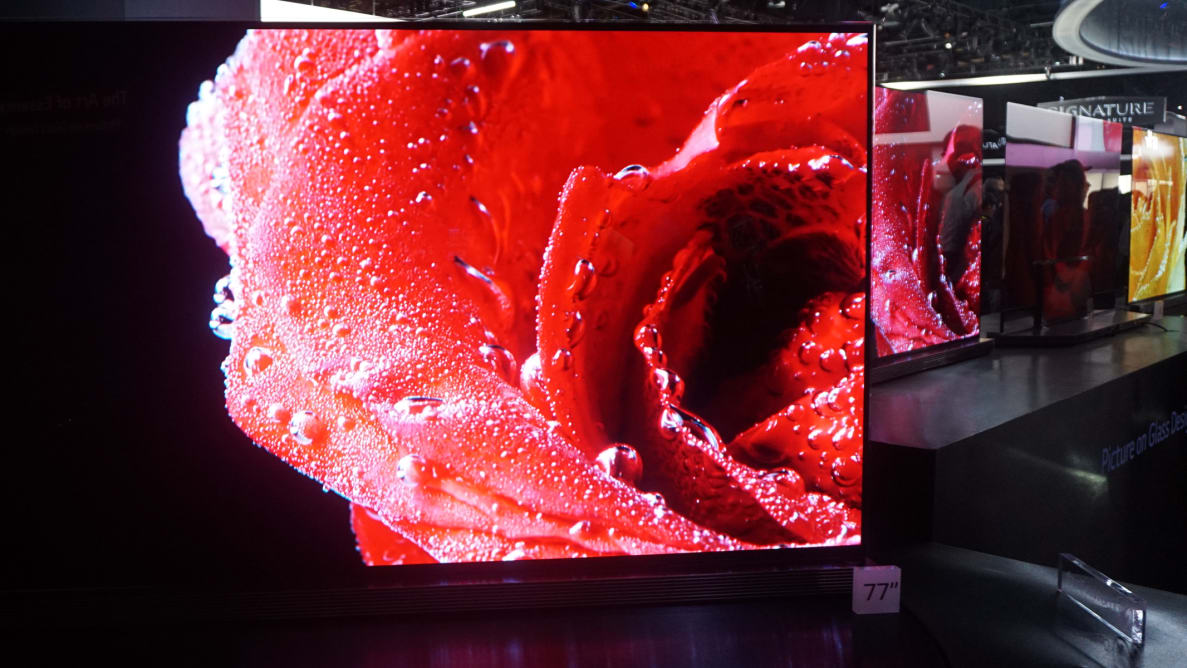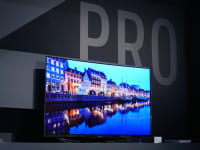We don't know pricing or availability yet, but we do know that when it comes to the "Signature" G6 Series, LG has spared no expense. Both OLEDs boast improvements to color reproduction and overall panel brightness, on top of naturally impressive contrast and now-standard 4K resolution. According to LG, both G6 OLED TVs meet the recently announced UHD Alliance standards.
The G6 Series' physical characteristics reflect just as much research. Even if you don't think a transforming soundbar/stand combo that also houses the TV's processing and electrical components is a nice touch, at least LG didn't curve the screen.
Toss in the company's colorful webOS smart platform and you get this great combination of awesome-looking screen, beautiful aesthetics, and top-notch user experience that lazy TV reviewers like me dream of—thanks LG! But seriously, this product is quite the achievement... even if it is TV price equivalent of a Gulfstream G650.
Hardware & Design
Ladies love my style, on my OLED gettin' wild
For probably the first time in my career as a TV reviewer, I'm as jazzed about how this TV looks on the outside as I am about its picture quality. Picture quality is still the main draw here, but some of the improvements LG has made are pretty amazing.
First, the screen itself. Dubbed "Picture-on-Glass," the G6's OLED panel is printed directly onto a single sheet of glass. This gives it an incredibly slim depth—about 3mm—and means in a darker room the glass and narrow bezels simply melt away into the night. The whole print is mounted directly to a beveled, metallic soundbar base that also houses all of the TV's electronics.
{{ photo_gallery "design" }}
Stripping all embellishment from the screen and squeezing everything into the stand is a neat trick on its own, but there's more. If you want to wall-mount the G6, the attached stand can rotate and fold up behind the screen. According to LG, the internal speakers will then rotate along with the stand so that they fire forward rather than down, but I haven't seen the process in action yet.
Finally, LG has also redesigned the Magic Remote. I had a little hands-on time with it during a closed-door briefing before CES, and I can attest that its sparse upgrades—like long-awaited set-top box power and play/pause buttons—are welcome indeed. However, while I've seen the new webOS 3.0 platform in action, as of this write-up I haven't been able to use it extensively enough to comment on the 2016 iteration.
But let's be honest: you're not reading this for info on a smart platform. This is an OLED, so inky shadow tones and vivid colors are where the G6 really flies above the competition.
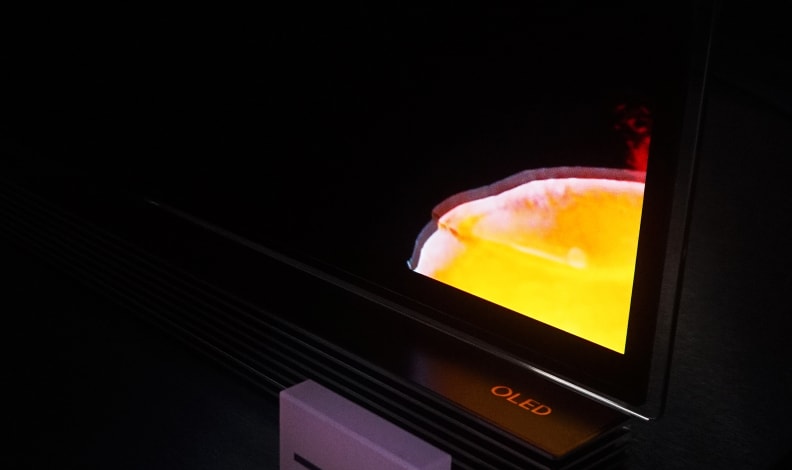
The glass edges along the perimeter of the OLED screen complement the G6's tendency and affinity for dark, shadowy scenes.
Picture Quality
Hell yeah
LG is one of the most successful consumer electronics manufacturers in the world, so it probably could've gotten away with a modest update of our current #1 TV, the EF9500, for this year's CES. Thankfully, that's not the case here.
To understand where the G6 succeeds, it's important to know a teensy bit about the current state of High Dynamic Range, or HDR. The HDR content format is far-and-away the most important advancement in video since the jump from analog to digital, so standardizing it and shipping it out is something everyone—from Hollywood producers, to TV manufacturers, to your garden variety videophile—should be interested in.
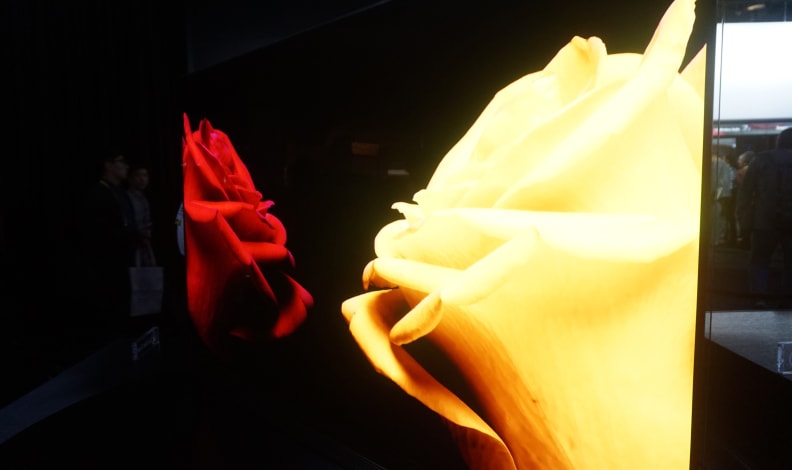
According to LG, the G6 meets requirements for "OLED" HDR, 100% of the DCI-P3 color space, and at least 540 nits of typical brightness.
Fortunately, the UHD Alliance recently announced standards for "Premium" HDR TVs, and just in time for the latest flagship models from Samsung and LG. Basically, there are two contrast standards—one for LCD, one for OLED—with fairly strict requirements. In order for a TV to deliver high-quality HDR content, it must be able to hit certain minimum performance requirements.
While we haven't tested it yet, LG claims the G6 does just that: It produces a minimum typical brightness of 540 nits and a maximum black level of 0.0005 nits. This would give the G6 a contrast ratio of over 1 million to one, which of course sounds absurd. While it's not a massive stretch compared to the EF9500's specs last year, I'll believe it when I test it.
I will say this: I watched this TV in both a well-lit hotel room next to a window and in the darkness of LG's CES 2016 booth, and while it definitely looks its best in a dimmer environment, the image wasn't washed out and diminished the way the old plasma TVs would have been.
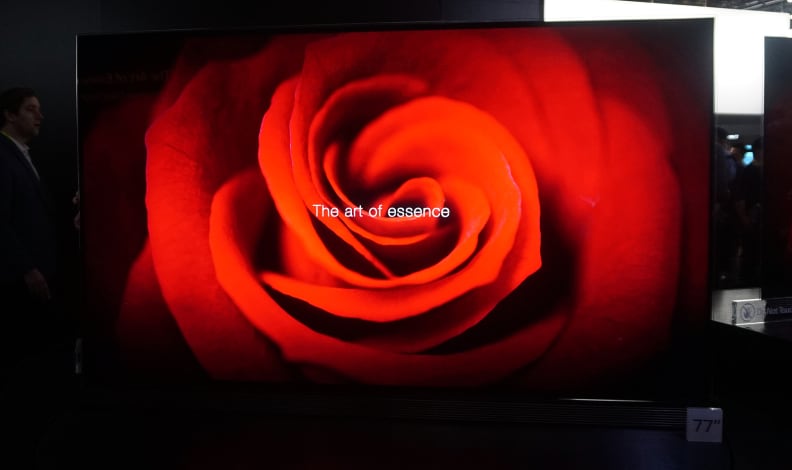
LG claims premium UHD specifications for the G6, including 100% DCI-P3 color and Premium HDR compliance. It isn't unbelievable, but we won't know any facts until we get one into the lab.
Visually, the G6's color fidelity is also very impressive. During a meeting, LG mentioned the G6's OLED cells have been "reformulated" to allow for the 2016 set's greater overall panel luminance. And in emissive digital displays, a higher ability for brightness correlates with improved ability to saturate colors. Whether it matches 100% of the DCI-P3 color space—which no TV has been able to do yet—is something we'll have to check in the lab.
What's really exciting is that any improvements LG can wring out of its OLED tech will extend to all OLED TVs, not just this one. Since LG is currently the world's only manufacturer of quality, consumer-facing OLED panels, any other OLED series—like the rest of LG's 2016 OLED lineup, or even Panasonic's CZ950. This will eventually mean more affordable, higher quality OLED in more styles and sizes.
The Verdict
No matter how poppin' the price tag may be, the G6 has us feeling fly.
As with most impressions based on carefully curated demos and show-floor conditions, it's impossible to say whether the G6 meets LG's lofty claims, or whether it will be even remotely affordable for the majority of consumers. But if this really is LG's first "true HDR" OLED TV, it's at least a healthy glimpse into a possible future where OLED isn't left behind by the swift pace of the international HDR ecosystem and the natural advantage LED LCD TVs possess in a brightness-based arms race.
There's also a good chance that if the G6 itself is out of reach of most consumers, one of the more affordable LG OLEDs will inherit some of the abilities on display here. LG has already announced three other 4K OLED series, and since OLED HDR is based on the physical printed panel, and not on an additional backlight or electronics system, it seems counterintuitive to continue producing OLEDs that don't take advantage of the G6's breakthroughs.
That said, we can't really make any concrete recommendations until we've gotten the G6—or one of LG's other OLEDs—into our labs for a full review. It's also worth noting that while improvements to contrast and color are great, they aren't super important for OLED since this tech already excels in those areas. LG had no comment about improvements in other areas, such as the panel's longer break-in time, the vignetting at the edges of the screen, or the image retention—issues videophiles have nit-picked in the past.
But ultimately, the G6 is a resounding success. Image quality looks as amazing as past OLED sets where it really counts, and its physical presence is a terrific step forward for TV design in a sea of copycat caltrop stands and over-hyped cable management systems.
Meet the tester
Lee was Reviewed's point person for most television and home theater products from 2012 until early 2022. Lee received Level II certification in TV calibration from the Imaging Science Foundation in 2013. As Editor of the Home Theater vertical, Lee oversaw reviews of TVs, monitors, soundbars, and Bluetooth speakers. He also reviewed headphones, and has a background in music performance.
Checking our work.
Our team is here to help you buy the best stuff and love what you own. Our writers, editors, and experts obsess over the products we cover to make sure you're confident and satisfied. Have a different opinion about something we recommend? Email us and we'll compare notes.
Shoot us an email